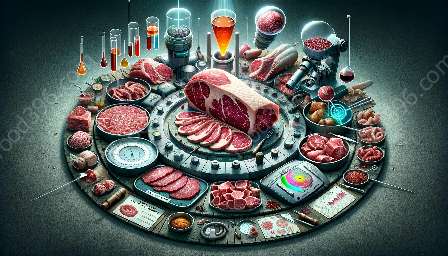Meat quality evaluation is a crucial aspect of meat science, encompassing various methods and techniques to assess and ensure the quality of meat products.
Understanding Meat Quality:
Meat quality refers to the intrinsic characteristics of meat that affect its appearance, texture, juiciness, and flavor. It encompasses various attributes such as color, marbling, pH, water holding capacity, tenderness, and aroma.
Importance of Objective Evaluation:
Objective evaluation of meat quality is essential for ensuring consumer satisfaction, food safety, and economic sustainability in the meat industry. Accurate assessment and control of meat quality contribute to the overall consumer experience and trust in meat products.
Meat Quality Attributes:
Meat quality can be evaluated based on several key attributes:
- Color: Assessing the color of meat provides insight into its freshness and suitability for consumption.
- Marbling: The presence of intramuscular fat impacts the meat's tenderness and flavor.
- pH: The pH level of meat influences its overall quality, shelf life, and microbial safety.
- Water Holding Capacity: This attribute indicates the ability of meat to retain moisture during cooking and storage.
- Tenderness: The tenderness of meat is a key indicator of its palatability and consumer acceptance.
- Aroma: The aroma of meat contributes to its sensory appeal and overall eating experience.
Objective Evaluation Methods:
Several methods and techniques are employed to objectively evaluate meat quality:
- Physical Measurements: Tools such as colorimeters, texture analyzers, and water holding capacity tests are used to quantify meat attributes.
- Chemical Analysis: pH meters, proximate analysis, and volatile compound analysis provide insights into the chemical composition and sensory attributes of meat.
- Sensory Evaluation: Trained panelists and consumers participate in sensory tests to assess the overall sensory attributes of meat products.
- Instrumental Analysis: Spectrophotometry, gas chromatography, and electronic nose devices can detect and quantify specific compounds related to meat quality.
Relevance to Meat Science:
Meat quality evaluation plays a critical role in meat science by providing valuable data and insights for research, development, and quality control purposes. It contributes to the advancement of processing techniques, product innovation, and food safety standards within the meat industry.
Conclusion:
Objective evaluation of meat quality is an integral part of meat science and is vital for maintaining high standards of meat products. By employing various methods and techniques, the meat industry strives to ensure consistent quality, safety, and consumer satisfaction.

